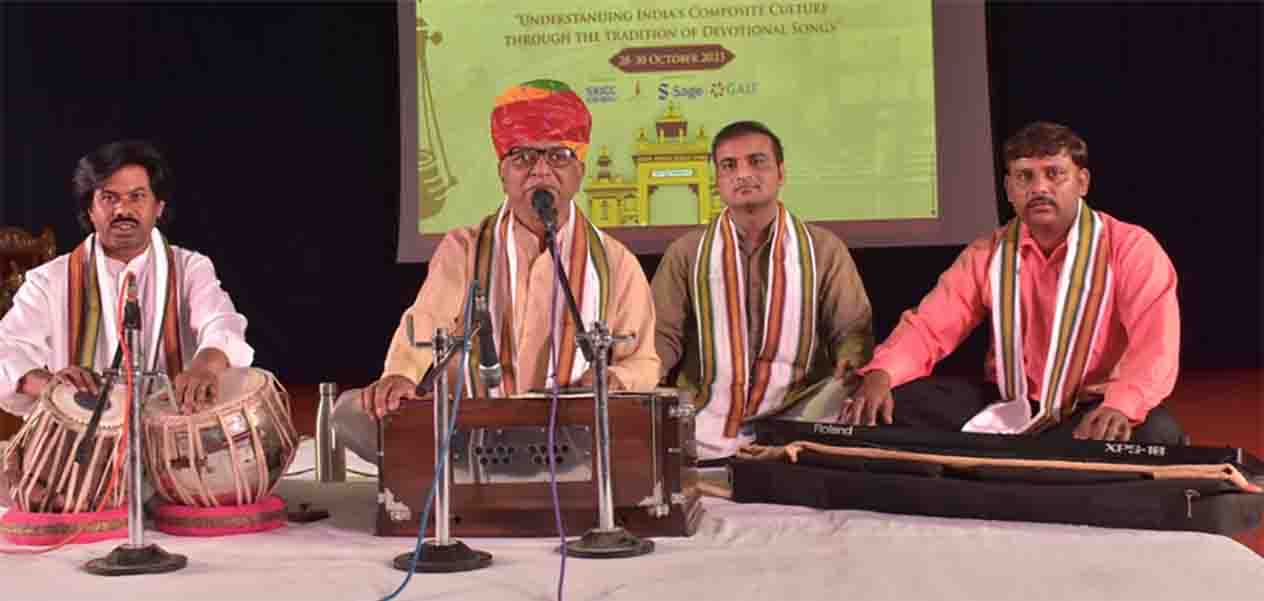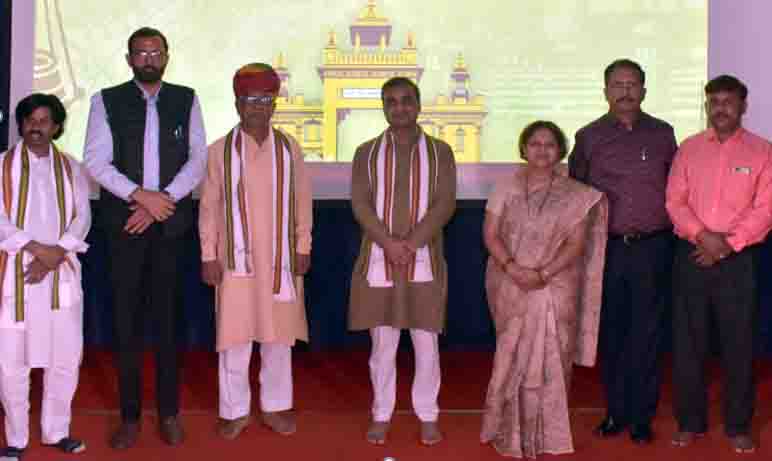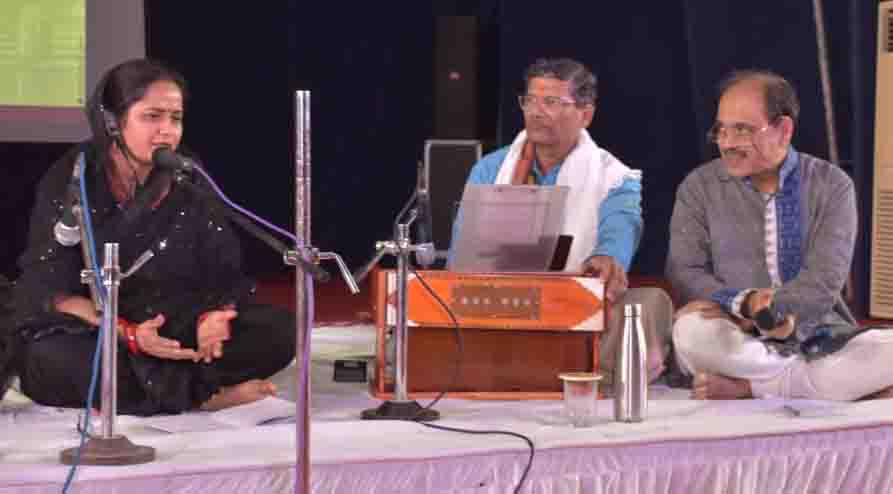
Hafeezur Rahman
I had the privilege of being invited as a guest speaker by Banaras Hindu University, Varanasi, Uttar Pradesh, to the International Seminar 'Understanding India's Composite Culture Through the Tradition of Devotional Songs.' I presented my paper on "The Contribution of non-Muslim Poets in Naat Writing." The seminar was organized by the Faculty of Social Sciences of this largest residential university in Asia. The event added to my admiration for the richness of India's diverse cultural heritage which has been evolving since ancient times.
Professor Binda Paranjape, the Dean, Faculty of Social Sciences, and the director of the seminar shared the idea behind inviting people from all faiths, especially the Dasa community of South India, to the three-day event held in the second week of November.
Paranjape had contracted the COVID-19 infection during the pandemic. During this time, she listened to devotional songs especially Naat and Salaam (praise of the Prophet Mohammad) and Bhajans. She discovered that the devotional songs not only healed her physically but also strengthened her spirit. From here emerged the idea for the seminar. When she shared her idea with me and sought my help, I was happy to chip in.
She invited people from the Islamic, Hindu, Sikh, Christian, Buddhist, Jain, and other communities and representatives from Singapore, Netherlands, Egypt, France, Sri Lanka, Nepal, South Africa, and the USA.
Professor Ainul Hassan, the Vice-Chancellor of MANUU, Hyderabad, delivered the keynote address, Prof Brij Maharaj from South Africa the valedictory address, and Dr. Harikesh Singh, and the former Vice-Chancellor of JPU Chhapra University, the inaugural address.
It was wonderful to listen to Anushka Nikam, a singer, and actor from Mumbai, sing Naat and Salaam.
It was my first visit to the Banaras Hindu University. BHU's rich history is rooted in Kashi's legacy dating back to the 6th century. During this time, an Iranian scholar Borzoye (the 6th century) came to Kashi to learn Sanskrit. He translated Panchtantra into Pahlavi, the precursor of Persian.

From left to right: Shahid Hussain (Tabla player), Dr. Hafeezur Rahman, Munna Master, Dr. Firoze (Department of Sanskrit, BHU), Prof. Binda Paranjape, Ranjan Mukharjee and Vakil Khan (singer).
Later, the Mughal prince Dara Shikoh learned Sanskrit in Kashi and translated the Maha Upanishads and Vedas into Persian language. He developed a strong understanding of Hinduism and Islam. He measured similarities in both religions like the Oneness of God, spirituality, and the humanitarian approach.
The BHU and the Aligarh Muslim University share their commitment to providing modern education to the younger generation of Indians. It’s amazing to realise that a practicing Muslim Shehnai maestro Ustad Bismillah Khan played his music in a Hindu temple of Kashi till his last breath. Sant Kabir, Munshi Premchand, and many others enriched Kashi with their poetry, music, and literature.
This prestigious institution seated in the ancient city of Kashi enchants souls with deep spiritual experiences. Kashi is the epicenter of syncretism that builds bridges for a stronger society. What particularly struck me was the similarities between its ethos and the work we do at the Khusro Foundation.
Our Think Tank also focuses on the harmonious and composite culture of India through the medium of literature. India’s varied seasons and different topography - from snow-peaked mountains to deserts - are home to thousands of ethnicities. No country has so many languages and such rich cultural diversity as ours has. The number zero was discovered in Hindustan, and history records that 800 years ago people from all the nations of the world came to Hindustan to study astrology and astronomy.
In my paper, I emphasized, ‘If music is your religion, the gates to heaven are open.” Music transcends all divisions and transforms the soul from the ordinary to the extraordinary, i.e.Parmatma, the divine. It was a delightful discovery that numerous non-Muslim Urdu and Persian poets were composing Naat in praise of Prophet Mohammed after 1857. This trend significantly contributes to strengthening our unity. Kunwar Mahendra Singh Bedi, Firaq Gorakhpuri, Kabir, Guru Nanak Ji, Hari Chand Akhtar, Pt. Anand Narain Mulla, Arsh Malisani, Krishna Bihari Noor, Jagan Nath Azad, Ravindra Nath Tagore, are some of the names in this list.
Conversely, many Muslim Sufis and poets have penned Bhajans in reverence of Lord Krishna, and Lord Rama, and Indian festivals like Holi and Diwali. Prominent among them are Amir Khusro, Dara Shikoh, Ghaus Gawaliari, Raskhan, Jaisi, Raheeman, Faizi, Sarmad, Jaane Hana, Barkatullah Pemi, Baba Farid, Baba Bulle Shah, Shah Zaheen Taji, Sarmad, Shah Niaz, Bedam Shah Warsi, etc.
Going back to the colonial era when tensions between Hindus and Muslims were rife, the BHU and AMU were born to unite the two communities. These institutions aimed to raise students with a positive mindset and broader outlook through education, literature, fine arts, and music. The fascinating story of BHU is that the Nizam of Hyderabad donated a good sum to it in 1939 while the Hindu Raja of Darbhanga, Rameshwar Singh, donated to the AMU.
The enchanting things about the seminar was that Snushka Nikam, a Hindu, Naat and Salaam sung by a Hindu girl and Muslims singing bhajans. A Muslim group from Rajasthan rendered soulful Bhajans.
The beauty of India is that if one lives in a Muslim area, Muslims write and sing Ram Bhajan and those living in a Hindu area, Hindus sing beautiful natiye kalam. Despite being a Muslim, Bharat Ratna the late Ustad Bismillah Khan continued to play the hymns of Shri Krishna on the shehnai at the Kashi Vishwanath temple till his last breath. He performed various harmonies, singing every religious song of all the venerable traditions in the charming City of Lord Shiva.
Old devotional hymns captured the essence of BHU and reminded one of the university's historical importance as a center of learning since the Vedic period.
Ranjan Mukherjee, Director of Khusro Foundation and an alumnus of BHU, spoke about the impact of Bhakti music on the human mind and body. He said a study by the Johns Hopkins University shows that music keeps the brain young and listening to good music lights it up.

Anushka Nikam singing the Naat
Ranjan Mukherjee spoke about the boal folk singers, who live as nomads in rural Bengal, Assam, Bangladesh, and Tripura.
The boal singers sing songs of love, devotion, communal harmony, and unity. Mukherjee lamented that it is a bit sad that inclusive culture is breaking down today and we need a revival to bring back our harmonious culture.
Mukherjee discusses Rabindra Sangeet and the works of Kazi Nazrul Islam, a Bengali poet and national icon for Bangladesh. Nazrul Islam wrote many devotional songs of Maa Kali.
Ranjan Mukherjee explained music transcends language, reaches people at a deeper emotional level, and leads to the release of of serotonin and endorphins in the brain that contributes to a sense of well-being. Music therapy, especially classical music, is known to reduce pain and physical stress and regulate heart rate. It has also been observed that loud music such as rock and jazz can increase heart rate and blood pressure.
In India every culture has hymns full of sweetness and the spiritual music of Sufis is influenced by the writings of famous Sufi poets like Rumi, Baba Bulle Shah, Kabir, Rahiman, Guru Nanak, Amir Khusrau, and others.BHU's respectful and harmonious social environment warmly welcomes diverse cultural elements like Naat Khwani, Sufi music, Sikh rituals, Christian religious songs, South African, Kerala songs, Hindu traditions, Buddhism, and Kabir. philosophies, Sufi culture, and hymns.
Dr Hafeez-ur Rahman is an Islamic scholar and Convenor of the Khusro Foundation
